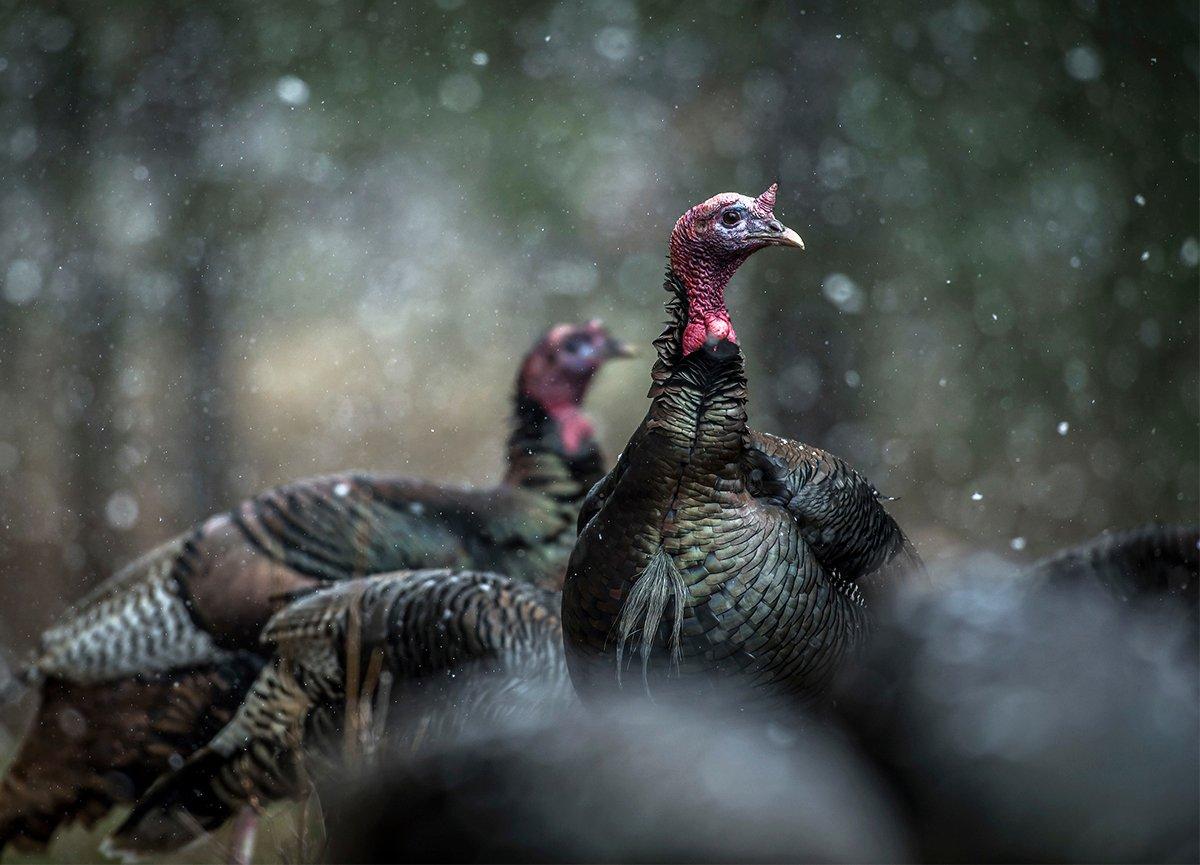You fired a shotgun blast into the air and watched your turkey fly away unscathed. That sucks. Here's how to keep it from happening again
A gobbler comes on a string, breaking a magnificent strut to run out his neck and rattle the foliage with a double gobble. You cluck. He stops and sticks up his red neck. You press the trigger. With improbable speed and grace for a gangly 20-pounder, the bird leaps into the air and thumps away, beard swinging. You stare and cuss in disbelief.
It's the turkey hunter's nightmare. Don't let it happen again.
Flow With a Turkey
Build the foundation of killing a turkey before you see him. Sit against a wide tree, pull your knees up into your body, and level your shotgun over them. If you shoot right-handed, point your left shoulder toward where the bird gobbles out front, and where you think he might come in. Vice versa for lefties.
Each time he booms out in the brush, ease your body and shotgun in his direction. Listen closely and pan with the turkey's spit-drumming and the rustling of his big feet in the leaves. Don't make any fast, foolish moves, just ease slowly and smoothly into shooting position.
The minute you spot him, suck a deep breath to calm your nerves and still your heart. But don't freeze up. Never take your eyes off a turkey. If he steps behind a tree, log, or pocket of thick brush, ease your shotgun to cover an opening where the bird should reappear. Do it smoothly and confidently. If the gobbler explodes into a strut and spins away, his head hidden behind his great fan, cover the bird quickly with your gun barrel.
Look for Pattern Busters
Look for saplings and thick foliage between you and a turkey, something many people overlook in the chaos of a gobbler roaring close. Most of the time you'll have to shoot through some small stuff, but be sure to look for inch-thick saplings and other thick stuff that can wreck your shot pattern and break your heart. Simply lean a few inches to a foot left or right to take a pattern-buster out of play as a gobbler works in.
(Don't Miss: Set up a Youth Turkey Gun in 5 Easy Steps)
How Close?
With today's magnum shotguns, tight turkey chokes, and high-velocity loads you can technically kill a gobbler at 50 or 60 yards or even a tad farther. But those long shots aren't for me.
I like to enjoy the show and let a gobbler strut within 35 yards. If a bird is calm and acts like he'll work closer, I'll gladly let him close to 30, 25, or even 20 yards. But you don't want a turkey much closer than that. When a tom gets inside 20 paces, you're asking for trouble, man. He'll see your gun barrel twitch. Or fail to see the yelping “hen” and run or catapult off before you can shoot. Or you'll come unglued and bang off a wild shot.
To me, prime turkey-killing range is 20 to 35 yards. To pin it down stake a decoy 30 yards from your setup. Or before you call, pull out your rangefinder and tag a big tree, rock, or deadfall 25 to 35 yards away. When that big bird steps beside your marker, take him.
Aim True
Countless gobblers keep their beards and spurs each spring because hunters fail to keep their heads down on their gunstocks. If you raise your head a few inches off the stock to look and marvel at a tom coming in, and press the trigger, dollar to a donut you'll blow it and pull the shot left, right, or low.
As a gobbler crosses the 35-yard line, drop your head and cheek into your shotgun. I mean dig into that stock! You're almost ready to pull the trigger, but remember one more thing: Aim!
When a big bird is close, spit-drumming and strutting, head pulsing reddish-blue to softball white, it's easy for even the most experienced hunter to come unglued and shoot at the whole turkey instead of focusing on a small spot on his neck.
When a gobbler breaks strut and runs his periscope up, pin your fiber-optic front sight or red dot on the major caruncles, the large, fleshy red bubbles that adorn the base of a bird's neck like costume jewelry. That way the shot pattern covers all the head/neck vitals. Head down, aim small, press the trigger — and enjoy the flop.
(Don't Miss: Tips for .410 Turkey Hunting)









